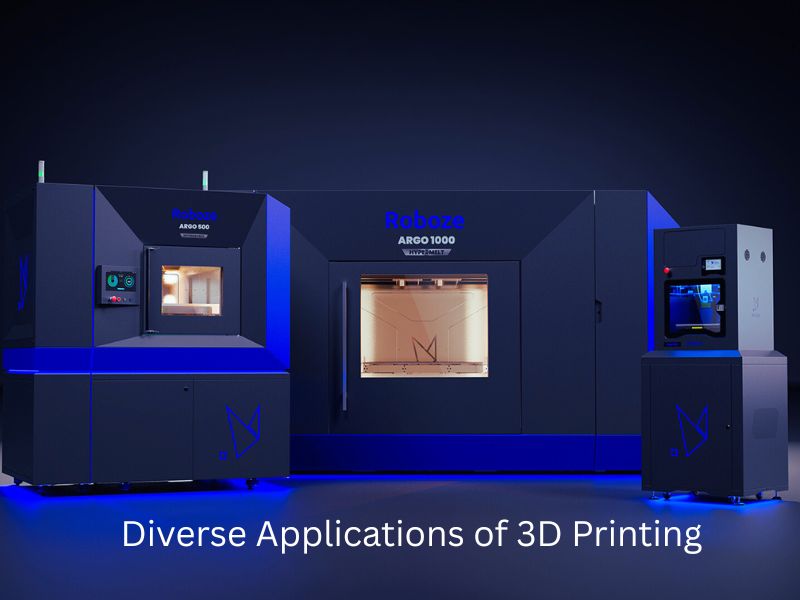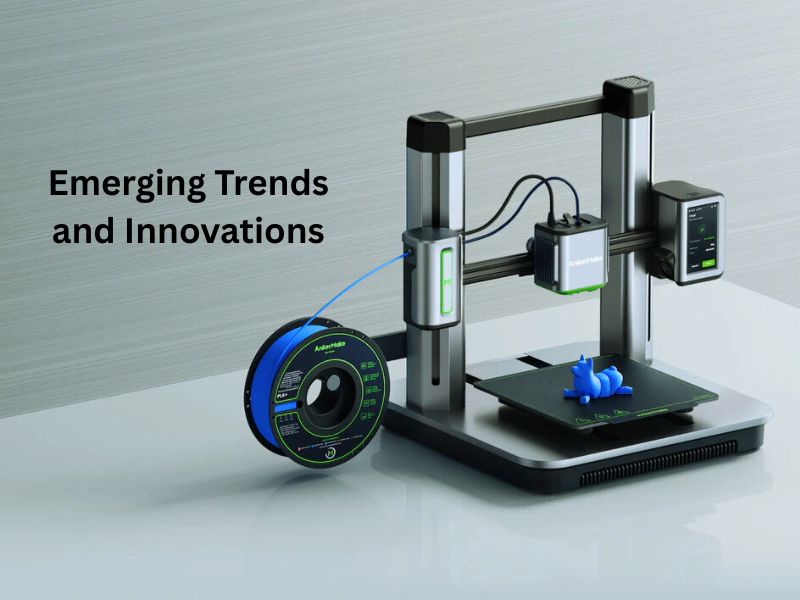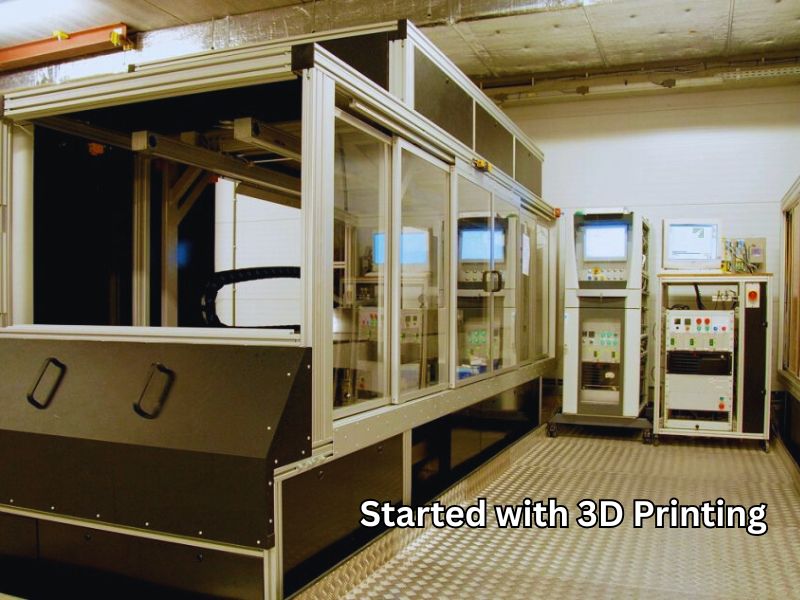What is 3D Printing? 3D printer, also known as additive manufacturing, is revolutionizing industries worldwide. In 2024, the global Market is projected to reach approximately $24.8 billion, with expectations to grow to $57.1 billion by 2028. This surge is driven by advancements in technology and increasing demand across various sectors. For small businesses looking to innovate, selecting the best 3D printer for small business needs can unlock new opportunities and streamline production processes.
As someone with extensive experience in the field, I’ve witnessed firsthand how 3D Printing transforms concepts into tangible products. From rapid prototyping to customized manufacturing, this technology offers unparalleled flexibility and efficiency. It’s not just a trend; it’s a revolution in how we design and produce.
In this article, we’ll explore the fundamentals of 3D print, its diverse applications, and why investing in this technology could be a game-changer for your business or personal projects.

Diverse Applications of 3D Printing Across Industries
Transforming Healthcare with Personalized Solutions
Custom Prosthetics and Implants: How 3D Printing Enables Tailored Medical Devices
3D print is revolutionizing healthcare by allowing the creation of custom prosthetics and implants. These personalized devices are designed to fit individual patients precisely, improving comfort and functionality. For instance, a study highlighted the use of printing to create custom-made prostheses for the surgical treatment of bone defects, reducing infection rates and accelerating the healing process.
Bioprinting for Tissue Engineering: Advancements in Printing Living Tissues and Organs
3D printer is advancing into the realm of bioprinting, where living tissues and organs are printed layer by layer. This technology holds promise for regenerative medicine, enabling the creation of complex tissue structures that could one day replace damaged organs.
Revolutionizing Manufacturing and Supply Chains
Rapid Prototyping and Product Development: Accelerating Innovation Cycles
3D printer is a game-changer in product development, allowing for rapid prototyping without the need for expensive tooling. Designers can quickly iterate and test prototypes, significantly reducing time to Market.
On-Demand Spare Parts Production: Reducing Downtime and Inventory Costs
3D print is transforming supply chains by enabling on-demand production of spare parts. This capability allows for businesses to create custom 3D print design solutions that reduce inventory costs and minimize downtime in industries such as aerospace and manufacturing.
Enhancing Aerospace and Automotive Engineering
Lightweight Components for Fuel Efficiency: Designing Parts That Reduce Weight and Improve Performance
3D printing is facilitating the design of lightweight components that enhance fuel efficiency in the aerospace and automotive industries. For example, Airbus has consolidated 30 parts into a single lightweight component, improving fuel efficiency and sustainability.
Complex Geometries for Optimal Performance: Utilizing 3D Printing to Create Intricate Designs
3D printing enables the creation of complex geometries that optimize performance. In aerospace, this enables the production of parts with intricate designs that traditional manufacturing methods cannot achieve.
Advancements in Construction and Architecture
3D-Printed Buildings and Infrastructure: Exploring the Use of 3D Printing in Construction Projects
3D printing is being utilized in construction to build 3D-printed buildings and infrastructure. This approach reduces construction time and material waste, leading to more sustainable building practices.
Sustainable Housing Solutions: Addressing Housing Shortages with Innovative Techniques
What is 3D Printing? 3D printing is offering sustainable housing solutions to address housing shortages. For instance, 3D-printed homes are energy-efficient and cost-effective, providing a viable option for affordable housing.
Innovations in Fashion and Consumer Products
Customizable Apparel and Footwear: Personalizing Fashion Items Through 3D Printing
3D printing is revolutionizing fashion by enabling the creation of customizable apparel and footwear. Brands like Adidas are launching 3D-printed shoes that offer unique designs and potential for future customization.
Unique Jewelry Designs: Creating Intricate and Personalized Jewelry Pieces
3D printing is revolutionizing jewelry design by enabling the creation of intricate and personalized pieces. Companies are using 3D printing to craft unique designs that cater to individual tastes.
Emerging Applications in Food and Bioremediation
3D-Printed Edible Items: Exploring the Possibilities of Printing Food
3D printing is venturing into the culinary world by enabling the creation of 3D-printed edible items. This innovation allows for intricate designs and personalized nutrition.
Environmental Cleanup Through Bioprinting: Using 3D Printing for Ecological Restoration
3D printing is being applied in environmental bioremediation to address pollution. Researchers are developing 3D-printed systems that can degrade pollutants, contributing to ecological restoration efforts.

The Future of 3D Printing: Emerging Trends and Innovations
Integration of Artificial Intelligence and Machine Learning
Smart Printing Systems: Enhancing Efficiency and Accuracy through AI
AI is transforming 3D printing by optimizing efficiency and accuracy. It facilitates real-time decision-making, reduces material waste, and enhances product quality.
Predictive Maintenance: Anticipating and Preventing Equipment Failures
AI-powered predictive maintenance analyzes equipment data to anticipate breakdowns and schedule proactive maintenance, thereby minimizing downtime and repair costs.
Sustainability and the Circular Economy
Recycling and Repurposing Materials: Reducing Waste by Reusing Materials
3D printing supports sustainability by utilizing recycled materials, such as PLA, which helps reduce waste and conserve resources.
Local Manufacturing Benefits: Minimizing Carbon Footprint through Localized Production
Localized 3D printing reduces transportation needs, cutting carbon emissions and supporting sustainable, efficient supply chains.
The Rise of 3D Printing
Understanding Time-Responsive Materials
3D printing involves materials that change shape in response to environmental factors, creating adaptive, self-assembling structures.
Potential Applications: Exploring Future Uses in Various Industries
3D printing shows promise in industries like aerospace, healthcare, and fashion, with applications ranging from adaptive aerospace parts to responsive clothing.
Bioprinting: The Next Frontier in Medical Science
Printing Functional Tissues and Organs: Advancements in Medical Applications
Bioprinting is advancing medicine by printing tissues for drug testing and potentially creating functional organs in the future.
Ethical Considerations and Challenges: Addressing the Complexities of Bioprinting
Bioprinting raises ethical questions regarding the ownership and regulation of printed organs, presenting challenges for legal and medical systems.

Getting Started with 3D Printing: A Guide for Beginners
Choosing the Right 3D Printer: Factors to Consider for Personal or Business Use
When choosing a 3D printer, consider:
- Type of Printing Technology: FDM is user-friendly and affordable, SLA offers high resolution, and SLS is used for industrial applications.
- Build Volume: Ensure the printer can accommodate the size of your projects.
- Ease of Use: Look for auto-bed leveling, touchscreen interfaces, and user-friendly software.
- Material Compatibility: Choose a printer that supports the materials you plan to use, such as PLA, ABS, or resin.
- Budget: Higher-end models offer more features but come at a higher price.
Essential Materials and Software: Tools Needed to Begin 3D Printing Projects
- Materials: FDM printers typically use PLA, ABS, or PETG filaments, while SLA printers use various resins for different applications.
- Software: Use slicing software such as Cura or PrusaSlicer to prepare your models. 3D modeling tools such as Tinkercad are great for beginners, and some printers come with proprietary control software.
Tips for Successful 3D Printing Projects: Best Practices for Optimal Results
- Level the Print Bed: Ensure it’s level to avoid adhesion issues.
- Maintain Temperature Settings: Follow recommended settings for your material to ensure proper extrusion.
- Use Quality Materials: Invest in reliable filament or resin brands.
- Start Simple: Begin with easy designs to learn the basics of the process.
- Regular Maintenance: Clean the print bed and nozzle frequently.
- Engage with Communities: Join forums to learn from others’ experiences and share your own.
By following these steps, you can ensure the success and efficiency of your 3D printing projects.
Here’s some information organized for What is 3D Printing into this table:
| Category | Details |
| Type of Printing Technology | FDM is user-friendly and affordable. SLA offers high resolution. SLS is used for industrial applications. |
| Build Volume | Make sure the printer can handle the size of your intended projects. |
| Ease of Use | Features such as auto-bed leveling, touchscreen interfaces, and intuitive software enhance the user experience. |
| Material Compatibility | Select a printer that supports the materials you need, such as PLA, ABS, PETG, or resin. |
| Budget | Higher-end models offer advanced features but come with a higher price tag. |
| Essential Materials | FDM printers use PLA, ABS, or PETG filaments. SLA printers utilize various types of resin, depending on the specific application. |
| Essential Software | Use slicing software like Cura or PrusaSlicer. Beginners can start with 3D modeling tools like Tinkercad. Some printers include proprietary control software. |
Wrapping Up
It’s a transformative technology that is revolutionizing how we design, produce, and distribute products. From rapid prototyping to customized manufacturing, 3D printing offers unparalleled flexibility and efficiency. As industries continue to adopt this technology, the potential for innovation and growth is immense. Whether you’re a hobbyist exploring new possibilities or a business seeking to streamline operations, embracing 3D printing can unlock new opportunities and drive advancements. The future of manufacturing is here, with 3D printing capabilities shaping it.
Frequently Asked Questions
What is 3D Printing, and how does it work?
3D Printing, often referred to as Additive Manufacturing (AM), is a process that creates a three-dimensional object by building it up one tiny layer at a time. It is the opposite of traditional subtractive manufacturing (like cutting or machining).
The general process involves:
Printing: The 3D printer reads the G-code and builds the object layer by layer, fusing the material together until the final object is complete.
Design: Creating a digital model using CAD (Computer-Aided Design) software.
Slicing: Using slicing software (like Cura or PrusaSlicer) to convert the digital model into a series of thin, horizontal layers and generating the G-code (printer instructions).
What is the difference between 3D Printing and Additive Manufacturing?
They are often used interchangeably, but Additive Manufacturing is the more technical, industrial term, emphasizing the process of adding material layer by layer. 3D Printing is the common, broad term used for the technology across consumer and industrial applications.
What materials can be used for 3D printing?
A wide variety of materials are used, depending on the printing technology:
Industrial: Powders for SLS (e.g., Nylon 12), and various metal alloys for metal additive manufacturing.
Filaments (FDM): PLA (Polylactic Acid—easy to print, derived from plant starch), ABS (Acrylonitrile Butadiene Styrene—stronger but requires a heated bed), PETG (a durable, food-safe plastic), and flexible filaments.
Resins (SLA): Various liquid photopolymer resins that cure under UV light for high-detail parts.
What causes “stringing” or “oozing”?
Stringing is the presence of fine hair-like plastic strands left between different sections of the print. It occurs when molten plastic oozes out of the nozzle while it is traveling (not actively printing).
- Solution 1: Retraction Settings: Increase the retraction distance and/or retraction speed in your slicer. Retraction pulls the filament back into the nozzle slightly during travel moves.
- Solution 2: Temperature: Reduce the nozzle temperature in 5°C increments to decrease the filament’s liquidity.
How do I fix a Clogged Nozzle or Under-Extrusion?
A clog prevents the printer from extruding the correct amount of material (under-extrusion).
- Solution 1: Cold Pull: Use the “cold pull” technique (heating the nozzle, inserting a new piece of filament, letting it cool, and then quickly pulling it out) to physically remove the blockage.
- Solution 2: Check Filament: Ensure the filament spool is not tangled and that the filament itself hasn’t absorbed moisture (which makes it brittle and leads to inconsistent extrusion). Use a filament dryer if needed.
